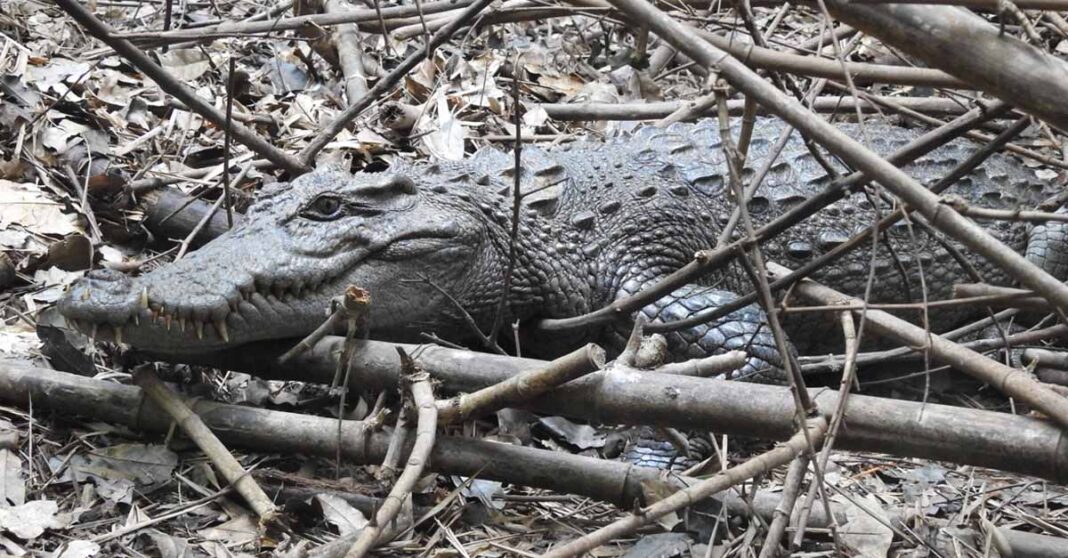Wildlife Conservation Society (WCS) and a local team have discovered crocodile eggs from a rare and endangered crocodile mother in the Xe Champhone Ramsar Wetlands of Savannakhet.
The mother crocodile was raised in captivity and released eight years ago. She successfully built a nest and laid eggs, making this the first documented case of a “head-started” Siamese crocodile nesting in the wild in Laos and only the 2nd time globally, as in 2020 scientists with Fauna and Flora International (FFI) found a captive reared female nesting in 2020, however all of the eggs in that nest were unfortunately infertile.
“This was a very exciting day for Siamese crocodile conservation across South East Asia as it gives further evidence that the head-starting model is a successful tool in the recovery of this critically endangered species,” said Samuel Leslie, Savannakhet Landscape Program Director.
The crocodile mother was identified as number 36, and records show she hatched on August 11, 2012, at the Tansoum village community-run head-starting facility. She was then was released into the wild in 2014.
“The nest was constructed in a dense bamboo thicket, leaving me little room to maneuver so, in the interest of safety, we had no recourse but to noose her. While my team held her securely, I crawled into the thicket and carefully removed each egg from the nest mound, [which is] a clutch of 30 eggs,” said Steven Platt, Associate Conservation Herpetologist on private social media.
The removal of the eggs is necessary at this stage. Siamese crocodiles are critically endangered, with fewer than 1,000 individuals remaining in the wild. Less than 5% of the eggs they lay survive to adulthood in natural populations.

The Xe Champhone Wetlands are home to Laos’ last remaining breeding populations of Siamese crocodiles, which led the Ramsar Convention to designate the area a “Wetland of International Importance.”
In March, another batch of 47 juvenile crocodiles were released into the wetlands because the crocodiles were at an appropriate level of maturity.
The hopes of many are resting on the success of this project and others like it, as Laos, along with so many places in the world, continues to struggle with environmental degradation and resulting loss of biodiversity.



